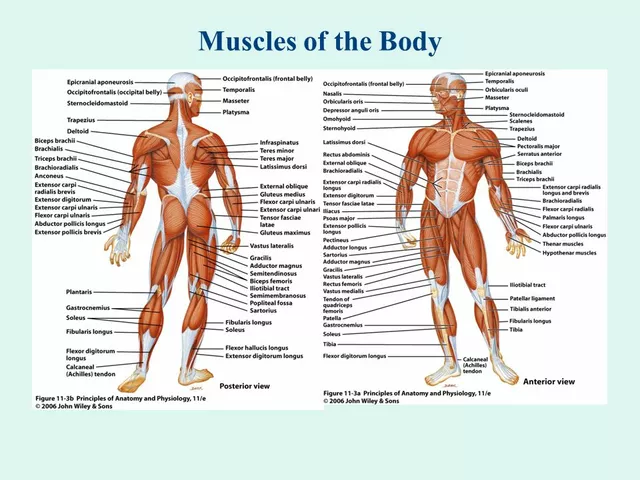For many women, understanding the difference between premenstrual syndrome (PMS) and pregnancy can be quite the puzzle. Both conditions come with a series of symptoms, some of which overlap and make it difficult to determine what's happening in their bodies.
Both PMS and pregnancy can bring about fatigue, mood swings, and changes in appetite, among others. It is crucial to recognize these signs and know their duration and intensity. Having this knowledge empowers you to better prepare and respond to your body's signals. In this piece, we'll delve into the world of PMS and pregnancy, providing insights that might clear up some of the confusion surrounding these two stages.
- Introduction to PMS and Pregnancy
- Common Symptoms and Overlaps
- How to Differentiate Between PMS and Early Pregnancy
- Expert Tips for Managing Symptoms
- Personal Experiences and Insights
- When to Seek Medical Advice
Introduction to PMS and Pregnancy
When it comes to PMS and pregnancy, the line separating them is often more of a blur than a sharp division. Both journey through women's health experiences, somehow traveling paths that constantly intersect. This overlapping territory often leaves many scratching their heads, questioning what is happening within and why their bodies feel the way they do. Premenstrual Syndrome, often referred to by its acronym PMS, is a set of symptoms that accompany the menstrual cycle's latter half. These can range from emotional fluctuations, such as irritability and depression, to physical sensations such as cramping and tender breasts. Interestingly, these same symptoms often make their appearance early on in a pregnancy, leading many to wonder if they're anticipating the start of a new cycle or a new chapter in their lives.
PMS affects a significant proportion of the female population, with up to 75% of menstruating women experiencing some form of these symptoms. Although lots endure this quietly, for others, it's a month-long saga that leaves them worn out. On the other side of the spectrum, the early whispers of pregnancy bring their own set of challenges and joys. It's a period that, for some, is filled with wonder and joy, and for others, it might brew anxiety as they wrap their minds around potentially life-altering implications. Indeed, the symptoms such as nausea and fatigue have been the harbingers of whispered questions in many circles of friends and family, "Do you think you might be?"
"Recognizing the symptoms of PMS and pregnancy can often be one of the most puzzling tasks for women, due to their similar nature," observes Dr. Sarah Johnson, a renowned gynecologist with decades of experience in women's health.
The confusion isn't anything new but understanding it better is beneficial. It helps women precisely know what to look out for and provide more certainty as opposed to constant questions. It's important to remember that each woman's body is unique. What one might experience with either PMS or pregnancy could be totally different from another's experience. Therefore, keeping track of your body's patterns and changes can provide vital clues. To help clarity emerge from the fog, we will traverse this landscape further, breaking down how these symptoms coincide, the nuances that separate them, and how you might better manage and understand this aspect of your health journey.
Common Symptoms and Overlaps
When it comes to dealing with premenstrual syndrome, often abbreviated as PMS, and early pregnancy, similarities in symptoms can result in misunderstandings and misinterpretations. At the core, both these conditions are tied to hormonal changes that influence the body in numerous ways. Mood swings, as many women will testify, are a notorious hallmark of both PMS and pregnancy. A dance of hormones can make you feel like you're on an emotional rollercoaster, possibly going from feeling elated one moment to suddenly feeling overwhelmed. Cravings and changes in appetite are common companions in both cases as well—who hasn't found themselves reaching for a jar of pickles or a bar of chocolate when the moon is full?
More distinctly, fatigue plays a significant role. Pregnancy especially requires the body to adjust and allocate more energy than usual to support the growing fetus, but a lot of women in PMS can feel similarly drained. Beneath the surface, estrogen and progesterone levels are at play, influencing how you feel physically and emotionally. Bloating, tender breasts, and headaches often come along for the ride. In practice, this can make distinguishing between PMS and early pregnancy without further signs quite challenging. Often, these shared symptoms can make the days leading up to the expected start of menstruation either hopeful or nerve-wracking, depending on an individual’s circumstances and desires.
It is crucial to pay attention to bleeding patterns as well. While spotting can occur in early pregnancy due to implantation bleeding, a fuller menstrual flow is typically indicative of PMS as the menstrual cycle continues. According to the American College of Obstetricians and Gynecologists, nearly 85% of women experience one or more premenstrual symptoms regularly. Interestingly, some women report intensified PMS symptoms as a precursor to pregnancy, though this is not universally observed. In this complex ballet of symptoms, it's no surprise that such overlaps can lead to confusion, especially when planning for or avoiding pregnancy is dependent upon correctly interpreting these bodily cues. A friend of mine who recently went through this, simply put, "It's like trying to read tea leaves when all you want is clarity."
The National Institute of Child Health and Human Development notes, "While the symptoms of PMS and early pregnancy may mimic each other, a careful tracking of these symptoms over time combined with a pregnancy test will offer better clarity."
Given these overlapping symptoms, many find that a reliable pregnancy test is worth its weight in gold for offering clarity when nature is being particularly mysterious. Nonetheless, it's important to note that these symptoms alone, without proper medical confirmation, can only guide speculation to a certain extent. So while some women might swear by their intuition, taking stock of the indicators can help provide insights into what's truly going on, and when in doubt, a visit to a healthcare professional can bring much-needed answers.

How to Differentiate Between PMS and Early Pregnancy
Recognizing the lines between PMS and early pregnancy can be somewhat tricky due to the similarity in symptoms. Both experiences often involve mood swings, hormonal changes, and physical discomforts. But fear not, as there are subtle differences that, when noticed, might give clues about what's going on in your body. Awareness of these distinctions can save you from unnecessary anxiety and help you take the appropriate steps without jumping to conclusions too early.
A classic symptom of PMS is fluid retention which often leads to bloating. Although early pregnancy can also lead to similar bloating feelings, the timing and severity might vary. In pregnancy, bloating tends to be persistent and might be accompanied by nausea or food aversions. Speaking of appetite, where PMS might cause cravings for high-sugar or salty treats, cravings during pregnancy may not follow the same pattern. Additionally, breast tenderness is common in both, but in pregnancy, it might feel more intense and is often accompanied by a darkening of the areolas.
Fatigue is another crossover symptom that women face, thus making distinctions complicated. But unlike PMS, where fatigue might come and go, pregnancy-related fatigue tends to last longer and can be quite debilitating. It's because the body is working overtime to support and sustain a new life, which is both awe-inspiring and exhausting. There's also the matter of spotting. While spotty bleeding is rare in PMS, it can be an early pregnancy sign, known as implantation bleeding, which occurs when the fertilized egg attaches to the uterine lining.
According to Dr. Emily Stone, a well-regarded obstetrician, "Awareness of one's menstrual cycle and observation of symptoms over time can offer immense clarity and lead to an earlier recognition of pregnancy."
Observing your regular cycle and being aware of patterns aids a lot. Those who regularly chart their cycles might easily spot irregularities which could point to pregnancy instead of PMS. For instance, a missed period is one of the most telling signs. However, stress and other external factors can also delay periods, complicating the identification process. A pregnancy test or a visit to the doctor becomes essential at this juncture to confirm suspicions.
In the quest to understand your body better, it’s important to remember that no two bodies are alike. While your friend might have clear-cut symptoms that distinguish one from the other, it might not be the same for you. Accepting this uncertainty and seeking medical advice when required is a healthy way forward. Also, relying heavily on certain high-probability signs like persistent nausea, increased basal body temperature and heightened sense of smell can help in making an educated guess before official confirmation.
Expert Tips for Managing Symptoms
Managing symptoms of PMS and early pregnancy often requires a multi-faceted approach, where expert guidance can shed light on much-needed relief techniques. It's worth noting that small lifestyle changes can yield significant improvements. A balanced diet rich in whole grains, lean proteins, and a rainbow of fruits and vegetables can stabilize mood swings and reduce fatigue, bolstering your overall well-being. Incorporating foods high in calcium, magnesium, and omega-3 fatty acids is particularly beneficial. Besides, staying hydrated is crucial as water helps in managing bloating and cramping.
Many healthcare providers stress the importance of regular physical activity. Whether it's a gentle yoga session, a brisk walk, or dancing to your favorite tunes, keeping active releases endorphins that elevate your mood significantly and ease pain. Staying consistent with exercise can go a long way in managing symptoms, but it's essential to listen to your body and not overdo it.
Another powerful tool in your symptom-management arsenal is the practice of mindfulness and relaxation techniques. Whether through meditation, deep-breathing exercises, or progressive muscle relaxation, taking time to unwind mentally can alleviate stress, which is notorious for exacerbating PMS symptoms. According to Dr. Amanda Hughes, a well-regarded gynecologist, "Prioritizing mental and emotional health is as crucial as physical health during this time." A consistent sleep schedule can further enhance these benefits, as quality sleep plays a vital role in sustaining emotional stability and physical health.
"Tracking your symptoms can be incredibly insightful," suggests renowned health coach Lily Evans. "Over time, identifying patterns provides you with the unique opportunity to anticipate symptoms and manage them proactively."
Many women find tracking their cycles using apps or journals provides clarity and control. By noting physical and emotional changes, you empower yourself with the knowledge to take timely action. Sharing these insights with your healthcare provider can also facilitate personalized advice. For those suffering from severe symptoms, it might be worth considering supplementary treatments under medical supervision. Taking prescribed vitamins and supplements like vitamin B6 and evening primrose oil can often stave off the most debilitating of symptoms, following detailed consultations and lab work analysis.
Lastly, maintaining open lines of communication with your support network plays a crucial role. Discussing your experiences with friends, family, or professional counsellors can guide you through these transitions. Empathy and understanding, when shared, can remarkably ease the psychological burden many women face each month. All in all, harnessing the outlined strategies and tailoring them to your specific needs will likely provide relief as you navigate the stages of PMS or early pregnancy.

Personal Experiences and Insights
Trying to decipher the differences between PMS and pregnancy can be like looking for a needle in a haystack, especially when you factor in the uniqueness of every woman's experience. For some women, the symptoms aligned with PMS can mimic those of early pregnancy so closely that they swear their bodies are playing tricks on them. Take Emily, a 34-year-old mother of two, who recalls her confusion when experiencing extreme fatigue and nausea a few days before her period was due. She mentions how these symptoms were indistinguishable from her early pregnancy signs just a year later. Emily's story resonates with many because it circles around the commonality of such symptoms, adding a layer of complexity.
Many women have shared stories of cramping that feels similar to their usual PMS, but then they find out it's early pregnancy. This overlap stems from the body's production of progesterone, which can kick start during either phase. For Sue, remembering her first child's pregnancy was defining; she used to experience serious cramps every month as part of her PMS routine. So, the cramping barely rang a bell when she conceived the second time. Her experiences make sense considering the average intensity and duration of some symptoms can overlap so significantly. Despite the challenges, she embraced them with patience, learning to listen to her body's hints more astutely.
In the era of digital connectivity, online forums have become treasure troves where women from different backgrounds lend their voices. One of the frequently seen concerns in these forums pertains to the extent of mood swings. A user recounts how her bouts of tearfulness were dismissed as typical PMS by her friends, only for her to discover she was pregnant. The emotional roller-coaster replies and shared empathy build a community support that is both admirable and vital. Sally, a member of such online platforms, narrates how this genuine exchange of experiences cushioned her transitions. As a stat on how common it is: studies indicate that between 30-40% of women experience symptoms severe enough to seek online counsel before seeing a medical professional.
To tackle this, many women prefer holistic approaches such as yoga and mindfulness techniques. Prenatal yoga focuses not just on enhancing physical flexibility but also on grounding emotions. Natalie, my spouse, has found yoga to be a nurturing practice, especially emphasizing breathwork which helped her stay calm both during PMS and in early pregnancy phases. Her journey emphasizes holistic coping mechanisms which are being increasingly endorsed by healthcare providers. According to the American Pregnancy Association, prenatal yoga can indeed help reduce symptoms of anxiety in many women. Engaging stories like Natalie’s underline the essential mix of mental wellbeing and physical care.
Yet, anecdotes alone shouldn’t deter you from seeking medical evaluation if in doubt. When an unplanned cycle throws everything off balance, consulting with healthcare professionals can provide a clearer picture. A gynecologist once advised, "Don’t hesitate to reach out when your intuition tells you something is different." The clarity gained through medical tests and the reassurance from professionals can remarkably impact the way we navigate through similar emotions. It’s crucial to balance personal experiences with expert opinions for well-rounded insights on both PMS and pregnancy.
When to Seek Medical Advice
Deciphering between PMS symptoms and early pregnancy signs is something many women face with some trepidation. More so, understanding when it's time to consult a healthcare professional for any underlying issues becomes essential knowledge. If you experience symptoms that seem more severe than usual, don't hesitate to reach out for medical guidance. Intense cramps, persistent headaches, or drastic mood swings could mean something more than just your typical PMS or early pregnancy signs.
Severe pain and discomfort are major signals that warrant professional consultation. Pregnancy cramping is often gentle and fleeting, but if it becomes unbearable or is accompanied by heavy bleeding, immediate medical attention is advised. It's crucial to listen to your body and address these symptoms head-on since delaying could sometimes complicate matters. It's both empowering and reassuring to have a doctor validate your concerns and provide clarity on what you're experiencing.
If you're planning a pregnancy and find certain symptoms unusual, it may be helpful to schedule a preconception appointment. A healthcare professional can offer valuable insights on maintaining overall health, optimizing fertility, and possibly better understanding the symptoms that frequently accompany both PMS and pregnancy. They might even suggest lifestyle changes, dietary adjustments, or stress relief techniques to ease the journey.
It's worth noting that the psychological aspect should not be overlooked. Emotional well-being is as important as physical health, and symptoms like unmanageable mood swings or prolonged periods of sadness could benefit from professional intervention. Speaking to an expert can often bring relief and help in finding effective strategies to manage one's mental health. As Dr. Emily Martin from the Women's Health Institute once stated,
"Balancing our emotional and physical worlds is crucial during these pivotal times. Both streams influence one another more than we often realize."
For those who suffer from known medical conditions such as thyroid imbalances or PCOS, the line between PMS and pregnancy can be even blurrier. Conditions like these can exacerbate symptoms, making it all the more important to consult with a healthcare provider. Understanding this connection can help prevent potential complications and foster a more conscientious approach to managing symptoms.
Ultimately, prioritizing your health and well-being is key. If you're ever unsure about the nature of a symptom or feel concerned, trust your instincts and reach out for professional advice. It's a proactive step that can provide peace of mind and ensure you're taking the best care of yourself.







Olivia Crowe
January 23, 2025 AT 03:28